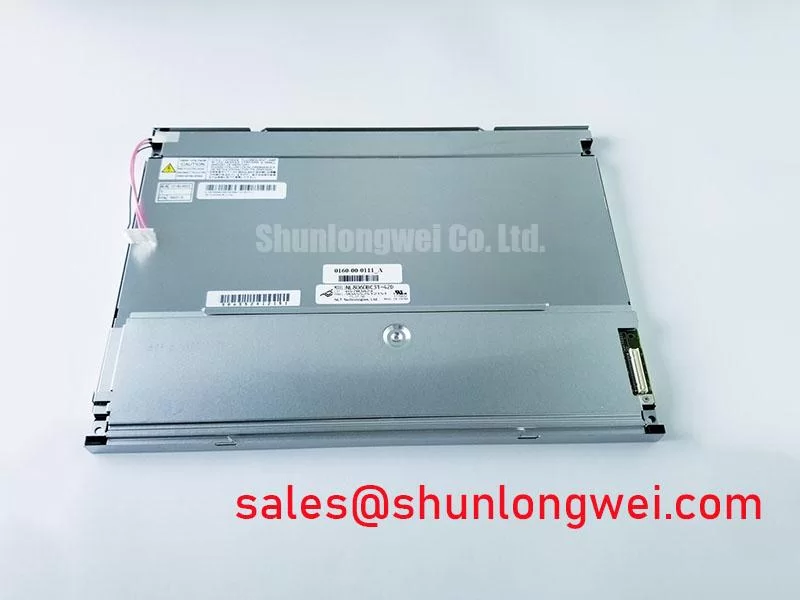Understanding the Role of Industrial-Grade LCDs
As the digital transformation of industrial systems accelerates, the demand for robust and high-performance industrial-grade LCD panels rises. Touchless human-machine interfaces, ruggedized displays for automation, and intelligent dashboards in manufacturing or transportation all rely on advanced TFT-LCD modules. Among numerous models, the AUO M150XN07 V3 and NEC NL8060BC31-42D stand out due to their mature technology, reliability, and targeted applications. This article presents a detailed LCD display comparison between these two panels from a perspective of technical evolution, industry trends, and user-centric value.
Specifications Comparison: M150XN07 V3 Versus NL8060BC31-42D
First, let’s review the critical parameters side by side to identify the technical distinctions and their implications for real-world performance.
| Feature | AUO M150XN07 V3 | NEC NL8060BC31-42D |
|---|---|---|
| Display Size | 15.0” (XGA, 1024×768, 85PPI) | 12.1” (SVGA, 800×600, 82PPI) |
| Luminance (Typ.) | 200 cd/m² | 400 cd/m² |
| Contrast Ratio (Typ.) | 500:1 | 600:1 |
| Viewing Angles (CR≥10) | 70/70/65/65 (L/R/U/D) | 80/80/80/60 (L/R/U/D) |
| Color Gamut/Support | 16.2M colors, 65% NTSC | 262K colors, 40% NTSC |
| Operating Temp. | 0~50°C | -20~70°C |
| Thickness | 12.15mm | 11.5mm |
| Typical Weight | 1,000g | 670g |
| Power Supply | 3.3V | 3.3/5.0V |
| Interface | LVDS (8-bit, 20-pin) | CMOS (6-bit, 41-pin) |
| Backlight | 2xCCFL, w/o driver | 2xCCFL, w/o driver |
| Intended Application | Desktop Monitor | Industrial |

Core Feature Insights and Performance Differentiation
The AUO M150XN07 V3 excels in delivering detailed images with its XGA resolution and *high color depth (16.2M colors, 65% NTSC)*. This positions it as a versatile choice for desktop systems, control panels, and applications where information density and visual fidelity are essential. Its LVDS interface supports higher data rates and color precision, aligning with modern embedded systems and digital signage designs.
Meanwhile, the NEC NL8060BC31-42D prioritizes wider operational parameters and display robustness. With superior luminance (400 cd/m²), it ensures visibility in *bright or outdoor industrial settings*. The enhanced contrast and broader viewing angles offer improved legibility from different perspectives—a crucial factor for factory automation terminals and heavy-duty machinery dashboards.
Notably, the NL8060BC31-42D boasts a broad temperature range (-20~70°C) and lighter weight, attributes that facilitate deployment in harsh field environments—outperforming the AUO panel in extreme weather or mobile installations. While its SVGA resolution is lower, this can be preferable in legacy equipment and IIoT upgrade projects where reliability, durability, and compatibility matter more than pixel density.
Technological Advancements Shaping LCD Panels
Both display modules stem from the mature TFT-LCD technology sector, yet the industry is advancing with rapid developments:
- Mini LED and Micro LED: Tier-1 manufacturers such as BOE, LG Display, and Samsung are ramping up mass production of Mini LED/Micro LED panels. These innovations are pushing traditional LCD boundaries with superior brightness, localized dimming, and high dynamic range. However, cost and complex assembly limit their near-term adoption in heavy industrial uses, keeping robust CCFL-backlit panels like M150XN07 V3 and NL8060BC31-42D relevant for now.
- Flexible and Transparent LCDs: Innovations in transparent and bendable displays are enabling new use-cases, including advanced HMI panels and smart windows. While these technologies show promise for the next generation of interfaces, today’s industrial market continues to value field-proven LCD modules with high reliability and strong supply chains.
- Resilience and Environmental Certifications: As industry standards demand more from display components, engineers are emphasizing environmental certifications, extended temperature ratings, and vibration resistance—as embodied by the NEC NL8060BC31-42D’s expanded temperature range and 2.0G vibration tolerance.

Application Scenarios and Selection Considerations
Let’s contextualize how these modules fit into industry requirements—from product selection to deployment:
- AUO M150XN07 V3: Ideal in environments prioritizing high color accuracy, graphics detail, and ergonomic viewing—such as centralized workstation monitors, medical diagnostic displays, or process visualization terminals in controlled settings. Lower luminance and modest temperature range mean it is best used indoors or in temperature-managed locations.
- NEC NL8060BC31-42D: Favored for outdoor kiosks, vehicle-mounted controllers, harsh industrial segments, and automation endpoints exposed to wide temperature swings, strong sunlight, or vibration. Its robust build and high brightness make it well suited for transportation panels and smart manufacturing lines where reliability trumps maximum image finesse.
For manufacturers, system integrators, or electronics engineers, differentiation comes down to lifecycle requirements, operational stress factors, and integration interface. The M150XN07 V3’s 8-bit LVDS enables richer color gradations but requires compatible controller hardware, whereas the NL8060BC31-42D’s CMOS interface and dual-voltage supply support legacy architectures and broader power environments.
For more in-depth specifications and physical design references, explore the detailed hardware documentation at SLW-ELE.
Market Trends and Forward-Looking Applications
As high-refresh-rate and ultra-high-brightness displays gain traction in gaming, broadcasting, and mission-critical visualization, Mini LED display technology continues to evolve. Yet for today’s industrial platforms—balancing logistics, supply assurance, and qualified reliability—proven CCFL-backlit LCDs like the AUO M150XN07 V3 and NEC NL8060BC31-42D remain a stable foundation.
While panel giants are investing heavily in future technology, procurement managers and engineers remain focused on the pragmatic aspects, including proven shock/vibration endurance, backwards compatibility, and cost-effectiveness across large-scale deployments.
Summary: True Value Beyond Specifications
Choosing the right industrial LCD display requires more than simply comparing pixel numbers or typical brightness. It involves a nuanced consideration of device lifecycle, environmental endurance, and system integration flexibility. As illustrated by the AUO M150XN07 V3 and NEC NL8060BC31-42D, each excels in particular contexts—whether prioritizing graphical detail or operational resilience.
Staying informed on ongoing innovations—like the rise of Mini LED displays and flexible LCDs—prepares decision-makers for eventual migration, but today, a balanced approach focusing on compatibility, supply stability, and field-proven ruggedness remains critical for industrial deployments.
